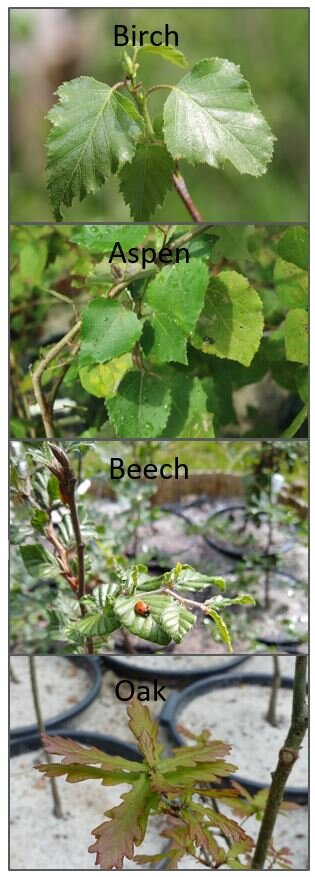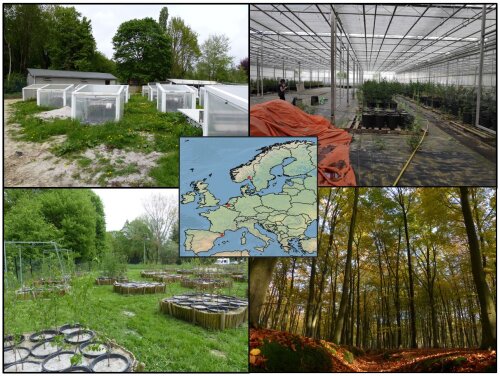Methods
Studied species

In this research we concentrate on four deciduous tree species: European beech (Fagus sylvatica L.) , pedunculate oak (Quercus robur L.), silver birch (Betula pendula Roth) and European aspen (Populus tremula L.).
European beech and pedunculated oak are late-successional species that produce leaves in one or two flushes and start senescence in the leaves most exposed to the sun. Silver birch is a pioneer species that produces leaves all throughout the season and starts senescence in the leaves least exposed to the sun (the oldest leaves). European aspen has an intermediate behavior showing same leaf dynamics as birch at young age and same leaf dynamics of beech and oak at mature age.
Sites
We have three main European study locations: Montseny (North-Eastern Spain, 1100 m a.s.l.;), Antwerp (Northern Belgium, <100 m a.s.l.), and Ås (South-Eastern Norway, <100 m a.s.l.). The areas were chosen at different latitudes, with Belgium at the center of the study species’ distribution and Spain and Ås at the northern and southern limit, respectively, for oak and beech. At each location, we have set up environmental-manipulative experiments on young trees (warming, drought but particularly fertilization) and we monitor mature tree populations. Research in Spain is in collaboration with the Autonomous University of Barcelona, whereas research in Norway is in collaboration with the Norwegian Institute of Bioeconomy Research. The Slovenian Forestry Institute is a key partner for wood analysis (see below).
Testing
For both, young trees in the manipulative experiments and mature trees in forest stands, we follow with accurate eco-physiological and laboratory approaches (i) leaf dynamics (spring bud-burst, leaf coloration, chlorophyll degradation, leaf senescence and leaf fall), (ii) wood growth (xylogenesis of stem, branches and coarse roots) and (iii) fine root elongation. For mature trees in forest stands, additional information on leaf dynamics will be obtained from remote sensing. Experiments and monitoring will run from 2017 till 2020. The results will be gathered in datasets and used to improve a large-scale model of forest ecosystem dynamics used to make climate projections.